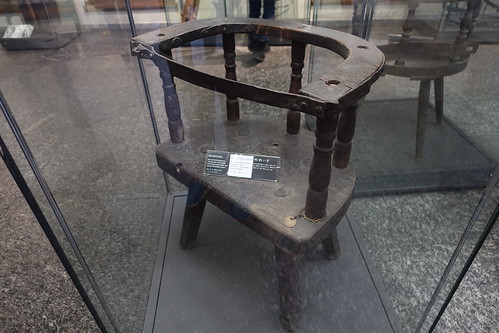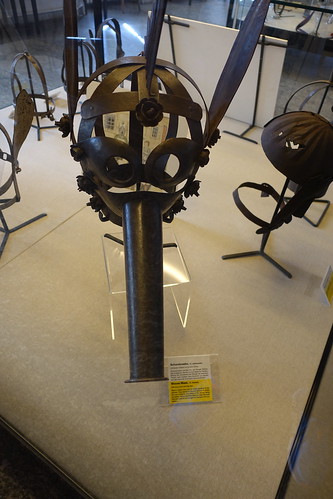History Comes Alive in Rothenburg ob der Tauber
It’s rare to find a town that has survived for centuries. Natural disasters, wars, and human intervention usually cause buildings to be destroyed and replaced by more modern structures. It is, however, possible to go back to medieval times by visiting a walled city between Frankfurt and Munich. Travelers to this region can see history come alive in Rothenburg ob der Tauber.

Walking Tour
Unfamiliar towns are best explored on foot. By strolling through Rothenburg’s cobblestone streets, we gained an appreciation for the walled city’s architecture and surrounding countryside. Robert Nehr, from the Rothenburg Tourismus Service, led the way during our brief tour.

Fine example of a town street
Our first stop was the Castle Gate, which led to the location where some feel the Hohenstaufen Castle was destroyed by a 14th-century earthquake. We strolled through the Castle Garden and stood in front of the Blasius Chapel. We paused to take pictures of a memorial recalling the memory of more than 400 Jews who were murdered during a pogrom in 1298. The word pogrom was first used to describe the 19th and 20th centuries attacks on Jews in the Russian Empire. Now, the word is also associated with the massacres occurring to Jewish communities during the Middle Ages. This site is highlighted in the walking tour booklet, An Invitation to Take a Walk: Jewish Rothenburg Ob Der Tauber, written by Oliver Gussmann, the pastor at the St. James church. This fantastic resource is translated into multiple languages.
Later in the day, Robert Nehr and Lothar Schmidt escorted us to almost all the places mentioned in this book. We learned about the town’s Jewish history starting with the first Jewish Quarter at Kapellenplatz dating to the 12th century to 1938 when the remaining Jews were forced to leave by the National Socialists. One of the high points was in the 13th century, when Rabbi Meir ben Baruch’s erudite scholarship attracted students to this town. For hundreds of years, the Jews were either subjected to anti-Semitic attacks or totally banned from the city (1520-1870). While touring the Second Jewish Quarter, we passed the building where Germany’s oldest mikveh (ritual bath) is located. It is estimated that efforts being made to restore this historic structure will be completed in 2021.

Rabbi Meir Garden with 10 original gravestones from 14th century Jewish community
After visiting the Castle Garden, we headed back toward the Castle Gate and glanced at an informative sign identifying some facts about the walled city, including 22 points of interest along the outer ring of the wall. If our stay was longer than 24 hours, we might have taken the two-hour self-guided Tower Trail tour. By walking along a small segment, we admired the surrounding countryside and the construction of the massive wall. In medieval times, the surrounding land was used as farmland and was controlled by Rothenburg. If you love history, I recommend purchasing the 60-page Rothenburg Tower Trail booklet as a resource before taking the historic walk.

Entrance from Garden back into City
The Old Town has 46 surviving towers that reflect a time when punishments for crimes were harsh and extreme. The Blood Courts, from the 14th to the beginning of the 19th century, forced people to be placed in stockades, branded, hanged, and beheaded. Looking at the picturesque towers, it was hard to imagine that many were once used as prisons. Each has a name related to its purpose. For example, the Debtors Tower was filled with people who defaulted on their monetary obligations, and the Punishment or Guilt Tower was used for lesser crimes.

Rothenburg Clocktower and Archway
Most of the ordinary people in the walled city lived in half-timbered homes with red roofs. Affluent individuals resided in stone houses that were built from the limestone harvested from nearby quarries. They did not have the luxury of private bathrooms. They could use a tub in their kitchen or visit the public bathhouse.
Like many visitors, we posed at one of Rothenburg’s famous spots, the Plönlein at the end of Schmiedgasse. Here, one can see the Sieber’s Tower to the left and the road to the Kobolzeller Gate to the right. The Sieber’s Tower was built in 1385 and separates the inner and outer fortifications. An online search will reveal an abundance of images taken at this spot. To gain an appreciation of everyday life, we visited the Town Hall and Market Square area. Instead of going inside the Town Hall Tower with its 52-meter view, we opted to learn about crime and punishment at the Medieval Crime and Justice Museum.

Rothenburg Town Square
Medieval Crime and Justice Museum
Conveniently located next to St. John’s Church and near the Town Hall, the museum showcases 1,000 years of German legal history. After viewing the displays of torture instruments and learning about the types of corporal and shame punishments, I certainly was happy that I lived in modern times rather than the Middle Ages.

Execution Chair
One of the advertised exhibits is the iron maiden of Nuremberg that was made famous by the Irish author Bram Stoker. Its first public appearance was at the Nuremberg Torture Exhibition in 1857. An adjacent sign states “no historical evidence has been found of an iron maiden ever being used as an instrument of torture or execution.” This gruesome cabinet supposedly tortured people with interior metal spikes when it was closed.
After strolling peacefully in the center of town, it was hard to imagine a time when people were subjected to public ridicule by wearing shame masks and cumbersome apparatuses in the Market Place. One of the masks was used for “blabbermouth women.” It had long ears, glasses, and a long tongue symbolizing that the person heard everything, saw everything, and told everything. Until the end of the 18th century, a pillory was located in the market place. Quarrelsome people were put inside a portable cage that could be turned by people who were in the square.

Shame Mask
While some descriptions are gruesome, others offer a tinge of humor. In the Middle Ages, a man’s home was unroofed as punishment for allowing his wife to beat him. It was believed that “a man who could not defend himself against his wife was not worthy of the protection from the weather and wind.”
Rothenburg Museum
The museum is housed in a former 13-16th century Dominican monastery. The main exhibits focus on the history of the region, artwork, and weapons. The museum was closed, but we were granted time to see the Jewish collection. Jewish gravestones with Hebrew inscriptions salvaged from the First Jewish Quarter’s cemetery, now a parking lot, are arranged in rows. Centuries-old ceremonial objects are in display cases. Books containing some of Rabbi Meir’s famous responses are displayed along with an early 19th-century megillah (scroll), a 18th century Sabbath lamp, and an 18th-century metal Purim (festival) plate.

Jewish exhibit inside Rothenburg Museum
We also took a quick peek at the convent kitchen, the oldest kitchen in Germany, and had an introduction into the culinary customs back to the Middle Ages. Rudimentary cooking equipment reinforced my belief that I’m fortunate to live in the 21st century.
Nehr opened a cabinet door to reveal a wooden barrel with a door that efficiently revolved in a circle resembling a modern Lazy Susan. Inside the barrel were a mug and plate. Centuries ago, the nuns used this apparatus to feed the poor outside the convent without being seen.

Robert Nehr demonstrating turntable at Rothenburg Museum
Käthe Wohlfahrt
For more than five decades, this family-run business has showcased thousands of Christmas ornaments and gift ideas. The items are handmade in Germany but can be ordered online. One doesn’t have to celebrate Christmas to appreciate the craftsmanship of the items sold in the store.

Kathe Wohlfarht
Night Watchman Tour
A long-haired, bearded man dressed in floor-length cloak greeted people as they approached the square. In one hand, he carried a halberd, a medieval weapon, and in the other hand he held a rectangular lantern. Within no time, this character captured his audience’s attention. The night watchman’s keen sense of humor and knowledge of Rothenburg’s fascinating history kept the group quiet as we followed him to several locations. Even though we had heard some of the same facts during our daytime tours, the night watchman’s version added a new layer to this historical town. It was not surprising to learn that the nationalist sentiments prevalent during World War II made Rothenburg “the most German of German towns.”

Rothenburg Night Watchman Tour
Near the end of the war, bombs destroyed the northern part of the city, but left approximately 60% of the town intact. While plans were being made to destroy the remainder of the city by artillery, U.S. Assistant Secretary of State John J. McCloy intervened. Recollections of his mother’s painting of Rothenburg caused him to send American negotiators to ask the German commander to surrender. Acting against Hitler’s direct orders, the German officer agreed to save the town. McCloy’s actions, along with others who have contributed to the restoration process, are commemorated in the town.

Rothenburg Night Watchman Tour
BurgGartenpalais
Small snippets of history enfold at the BurgGartenpalais. The lobby and the second floor are from an earlier time. The furnishings and décor feel like the 17th century. On the second floor, there is a unique hall with a high stucco ceiling. According to the owner, “A hall of that size is unique in Rothenburg.”

Main floor of hotel BurgGartenpalais
Some of the exterior walls of the hotel, as well as the cellar, are about 850 years old. Like the other magnificent homes on Herrngasse, this building was built by one of the wealthiest families of the town. These medieval homeowners were considered aristocrats. Historical records indicate that the Bezold family resided in the home. One of their family members was the mayor of Rothenburg at the time when Count von Tilly conquered Rothenburg (1631). Around the 19th century, the aristocratic lifestyle vanished.
After World War II, the home was converted into a facility that housed citizens who had lost their homes. Due to a lack of upkeep, the building was eventually abandoned. A few decades later, the Grams family purchased the property. The Hotel Meistertrunk was opened after an extensive modernizing and renovation process. The Berger-Klatte family took over ownership in 2010 and changed the name to BurgGartenpalais. The onsite restaurant is still called Meistertrunk. To make the property more marketable, the current owners added air conditioning and initiated a yearly renovation process. To date, 10 of the 14 rooms have been modernized.
Concluding Thoughts
A visit to Rothenburg ob der Tauber is a dream come true for anyone interested in the history of the Middle Ages. Few places in the world offer such a large selection of medieval structures within a walled city. The museums, the Tower Trail, the Night Watchman experience, and the self-guided Jewish tour add to one’s understanding of medieval German life. If you find yourself in Frankfurt or Munich, consider spending a day or two in the countryside so that you can see how history comes alive in Rothenburg.
Sandy Bornstein, the History Comes Alive Through Travel Editor for Wandering Educators, has visited more than 40 countries and lived as an international teacher in Bangalore, India. Sandy’s award-winning book, May This Be the Best Year of Your Life, is a resource for people contemplating an expat lifestyle and living outside their comfort zone. Sandy writes about Jewish culture and history, historical sites, family, intergenerational, and active midlife adventures highlighting land and water experiences.
All photos courtesy and copyright Sandy Bornstein
Note: Rothenburg Tourismus Service hosted Sandy and Ira Bornstein and provided lodging at the BurgGartenpalais, All of the opinions expressed in this story are based on the author’s experience.




















